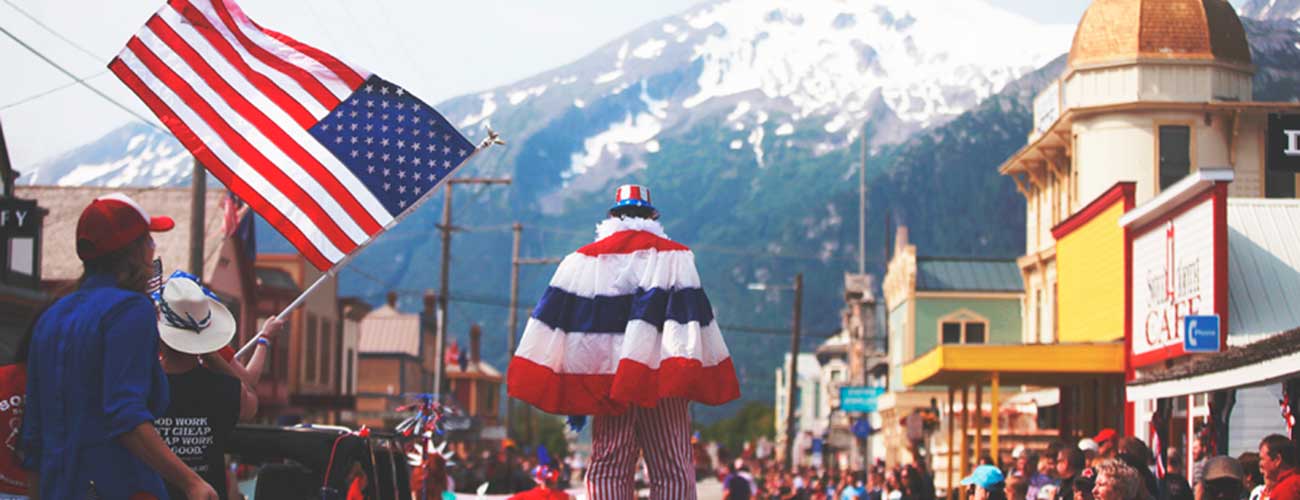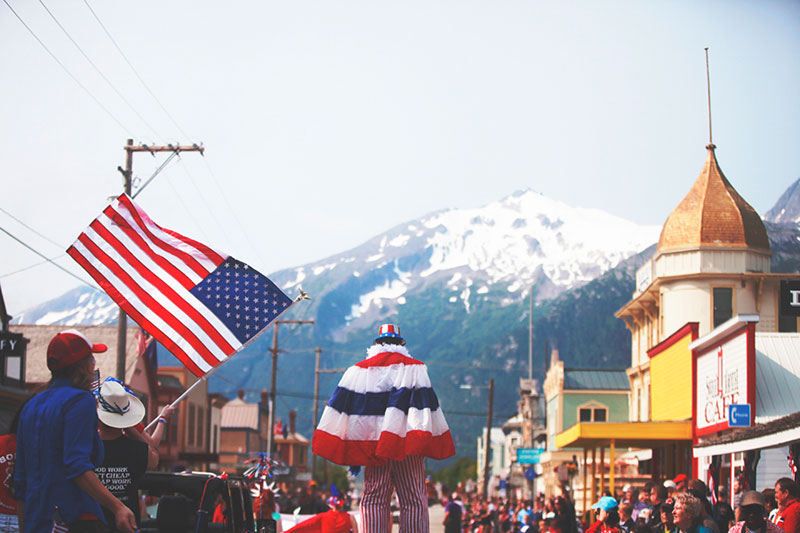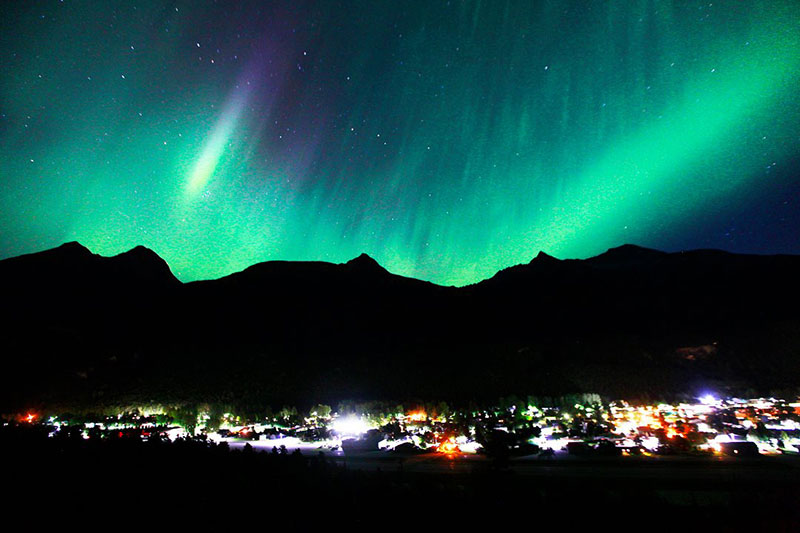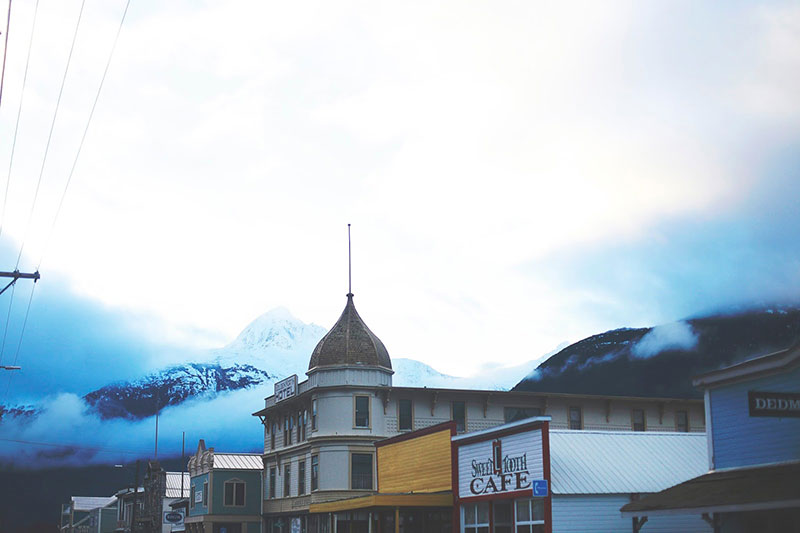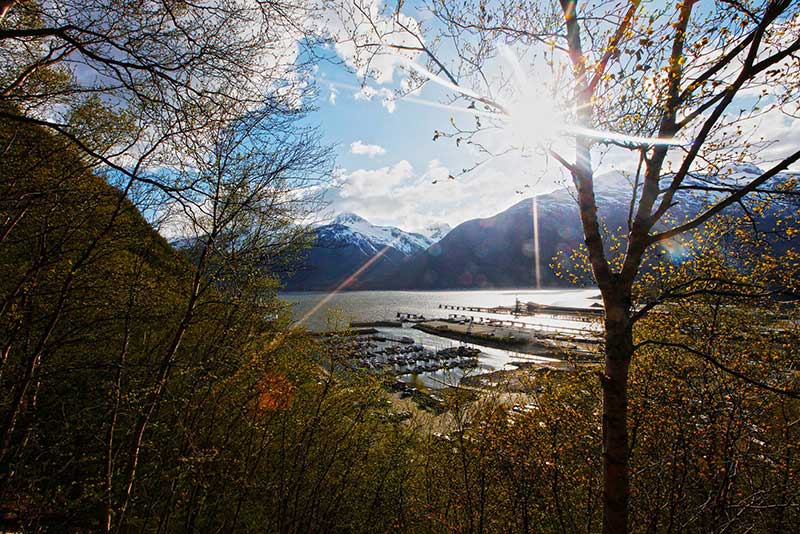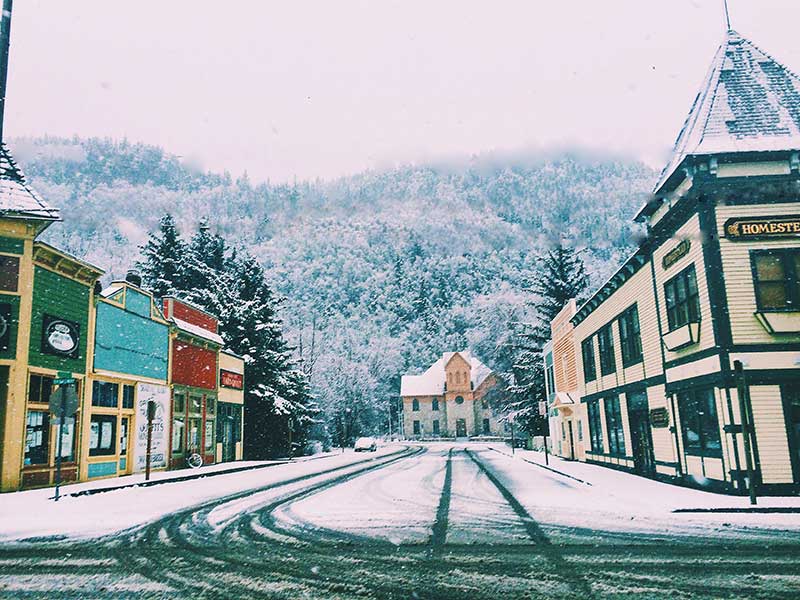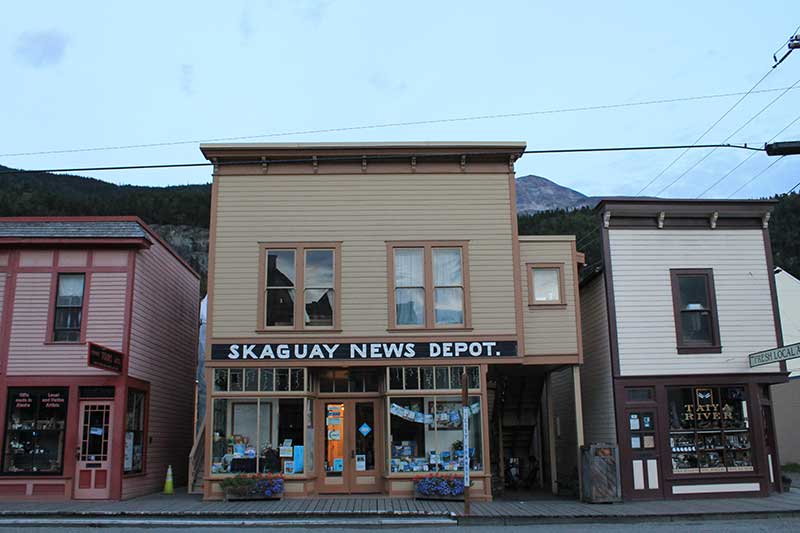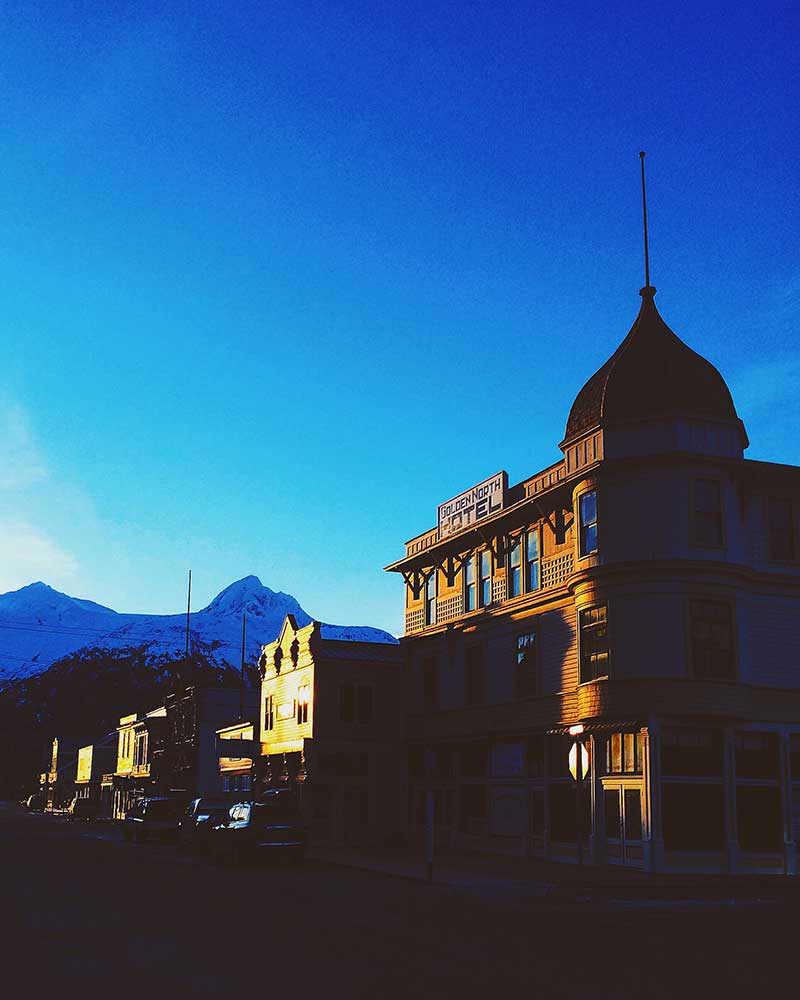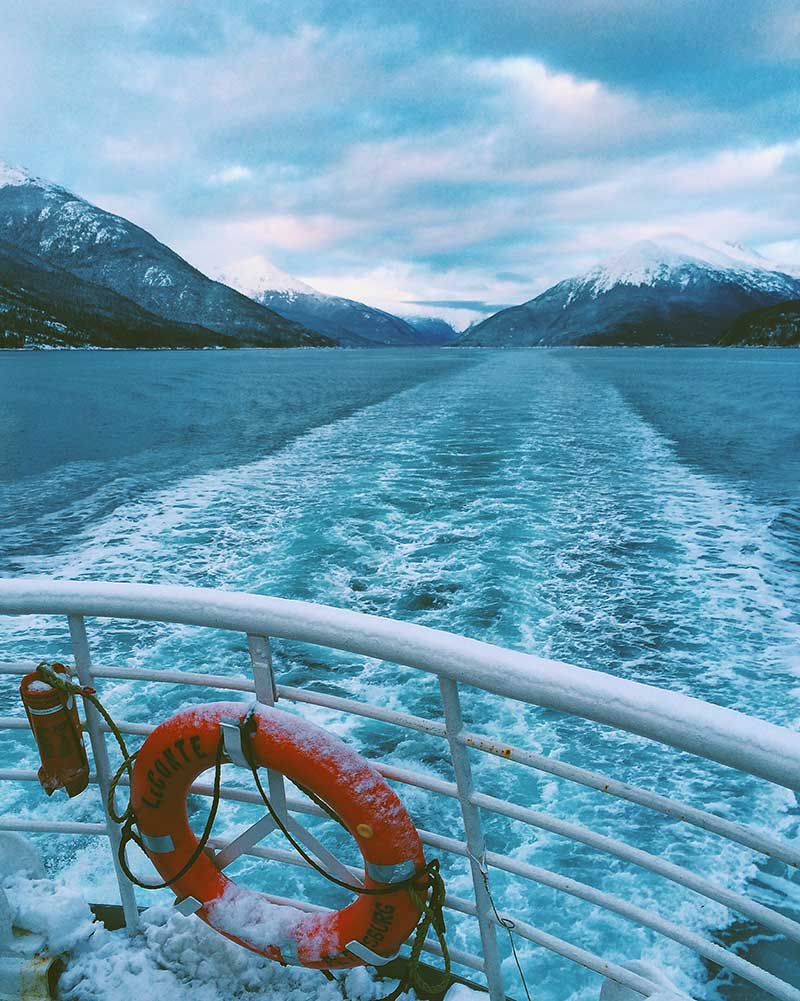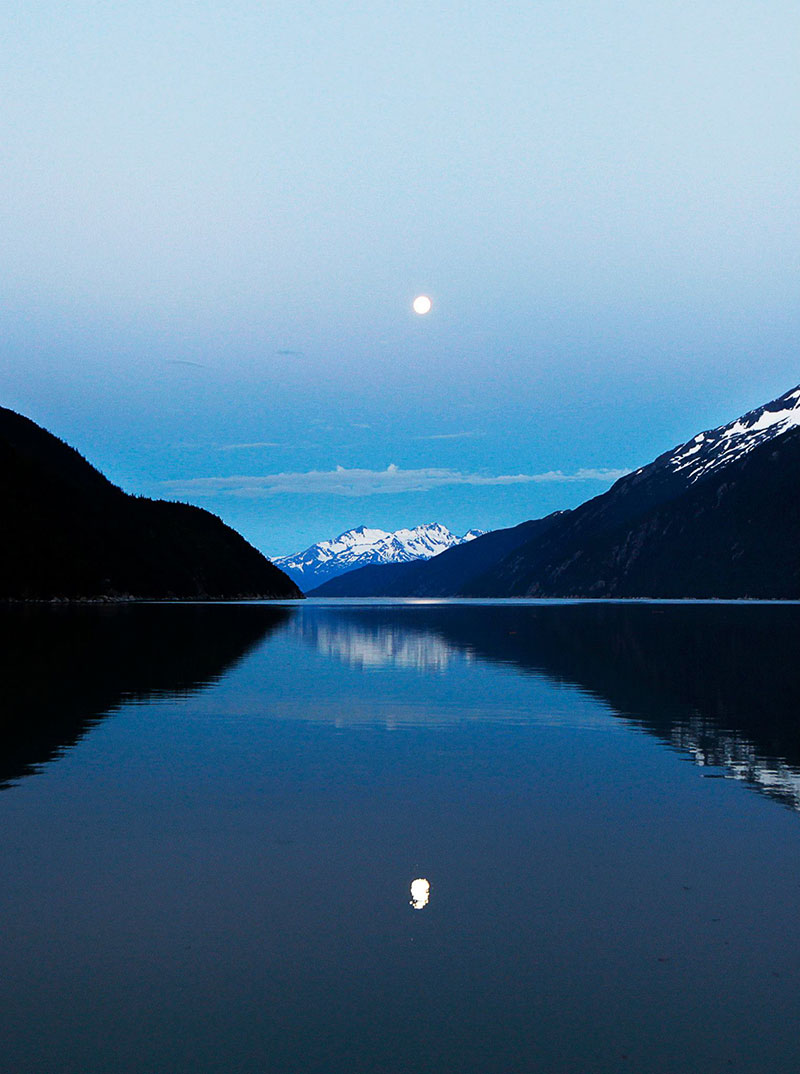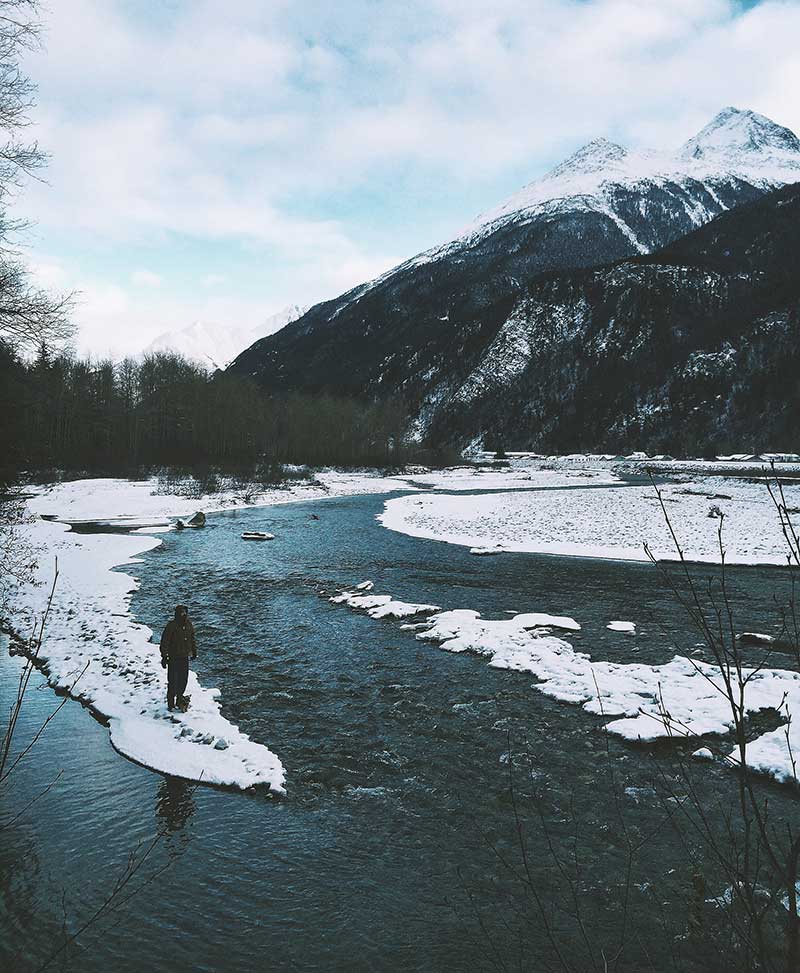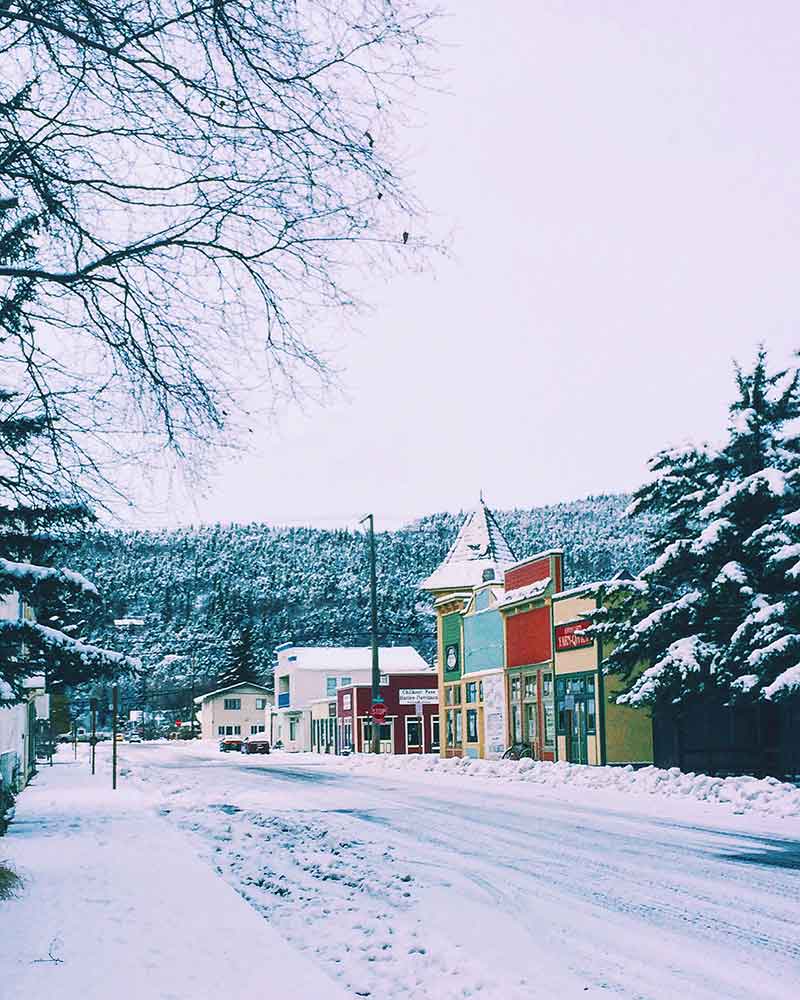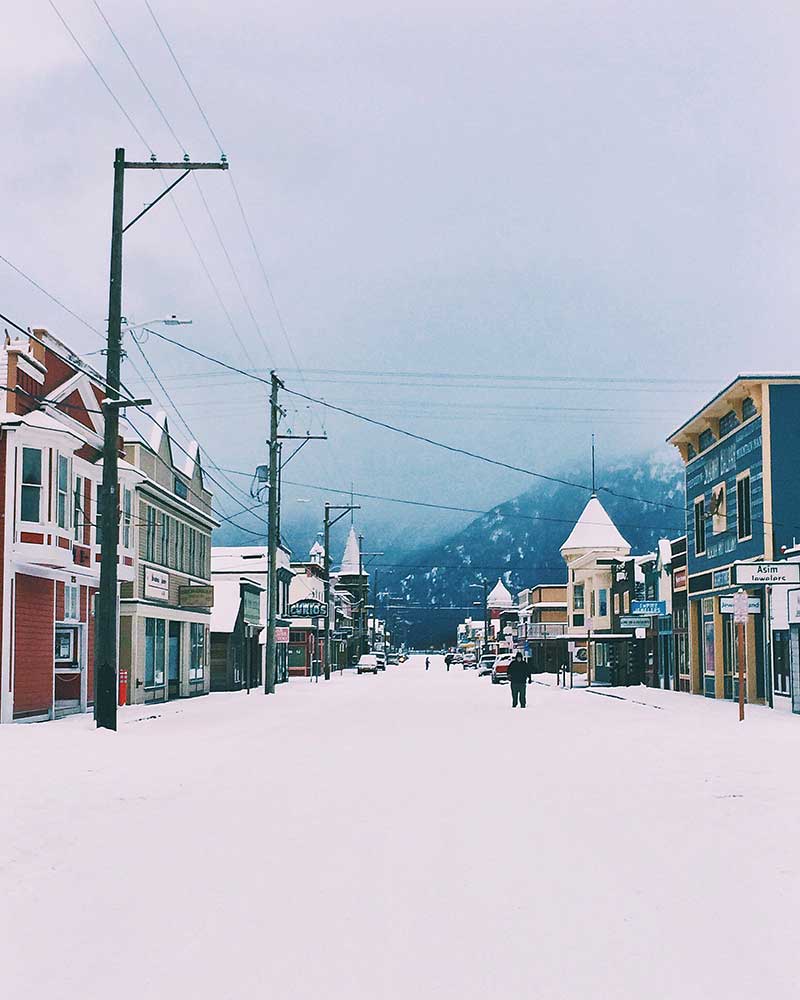Sign up for the daily CJR newsletter.
Earlier this month, Suzanne Ashe left her apartment and car in Anchorage and embarked on a journey with her Chihuahua mix Blanca. The pair flew about 500 miles, partly by seaplane, southeast to Skagway, a town of less than 1,000 year-round residents in the Alaska Panhandle, which had gained fame in the late-1890s as a supply post for the Klondike Gold Rush. The “Gateway to the Klondike” is a favorite stop for cruiseliners nowadays. But it remains a point of entry for a small handful of people still seeking adventure.
“Walking down the boardwalk,” Ashe says, “you can just imagine people heading out to find fame and fortune and small nuggets of gold.”
Ashe is something of a prospector in her own right, albeit one seeking a far less glamorous prize. She recently joined the biweekly Skagway News to fill out its one-person newsroom. Whereas journalists at strained metro and national newspapers have remarked for years about having to do more with less—Web updates, Twitter, multimedia, in addition to their regular reporting—they have nothing on Ashe in her new role.
“As the editor/reporter,” the listing for her job explained, “you will be responsible for writing every story, laying out every issue, sending it to the printers and picking it up in Whitehorse, [Yukon Territory], two hours away. You and our business manager are also responsible for distributing the papers throughout town and mailing them to the Lower 48.”
So, everything. “It’s so much fun for me to have that kind of control,” says Ashe, who’s worked at a variety of publications in different roles over the past 15 years. “Every single aspect of the job, I know how to do. But putting it all together, all at once, is obviously a tall task.”
It’s one required at countless hyperlocal news organizations that dot the American landscape the way flecks of gold once peppered the Yukon countryside. With huge media companies concentrated in a handful of urban centers, it’s easy to overlook these tiny publications. But that lack of attention belies the crucial role they play in many small communities where there are no other outlets—let alone digital startups—covering new construction projects or weekly school board meetings.
When Skagway’s population peaked between 10,000 and 20,000 in the late 1890s, the town boasted four newspapers. Those offerings shrank, until there was nothing more than a monthly real estate newsletter by 1978. That was the year a 21-year-old Jeff Brady arrived on the scene, fresh after graduation from the University of North Carolina at Chapel Hill. Skagway residents “have this independent spirit about them,” Brady says. “And they actually were craving a newspaper at the time.” He began publishing that year.
Like many a good newspaperman before him, Brady found a fluffier cash cow to finance his journalism. He began producing the Skaguay Alaskan—the town’s historical spelling—an advertising-heavy tourist publication that capitalized on the meteoric growth of the state’s cruise industry from the 1980s onward. Whereas the town saw roughly 50,000 visitors annually when Brady arrived, it now welcomes roughly 1 million. The Alaskan, handed out on the cruise ship docks on summer mornings by local kids dressed as newsies, helps finance 23 issues of The Skagway News annually.
Brady says paid circulation for the newspaper has remained steady around 900 or 1,000. “It’s dipped a little bit with new media,” he adds, “but not that much.” He also runs a small publishing company and a bookstore that occupies the first floor of the newspaper’s building.
A view of the Skagway offices (Photo by Suzanne Ashe)
“Your goal is not to lose money,” Brady says. “You’re just trying to break even to pay yourself….I usually had one other person doing the ads, but there were some years I couldn’t afford to bring anyone else on.”
Shoestring staff aside, the News once busted a local tourism official for improper use of a city credit card, Brady says. It also exposed a police chief who was hiring officers based on their religious backgrounds. The paper earned an Alaska Press Club Public Service Award in 2010 for a series of stories on inflated pricing by a medevac company. “In a small town,” Brady says, “you find out about these things quickly.” He sold the News to a Yukon-based publishing company last year, but it has continued earning statewide accolades for its coverage.
Still, it takes a special kind of journalist to run the place—namely, one comfortable living in a remote tourism outpost that sits along a fjord cutting through roughly 7,000-foot-tall mountains. Last Frontier, indeed.
“Your food comes once a week on a barge from Seattle,” says Elise Giordano, who departed the paper this month after about a year and a half at the helm. “Produce is already bad when you get it. There’s no movie theater. There’s only a couple coffee shops. You start to learn to shop online better. If you need to get out and see a funeral, you better not miss your flight.”
While Giordano held the paper’s paid summer internship in 2013, she lived in a tiny apartment attached to its newsroom. An old darkroom had been converted into a kitchen. The bathroom showerhead didn’t work at the time, she adds, “so I used a big yogurt cup instead.”
A few weeks in, Giordano’s successor, Ashe, is likewise navigating this peculiar work-life balance. After a friend recently told Ashe by phone about getting ready for work, she recounts, “I said, ‘Yeah, I’ve got to put on a pair of jeans and a bra and go to work, too.’ My friend said: ‘Oh, are you working from home?’ I said, ‘I’m on the bed-side of the door. And I have to look presentable just in case someone walks in the office side of the door.”
Ashe had previously been on the lookout for a job at the News when she lived elsewhere in Alaska. “I just knew the Skagway paper had such a great reputation,” she says. “It was always in the back of my mind that Skagway would be a good fit for me—small town, harbor town. I lived in San Francisco for a number of years, so I’m used to tourists.”
Ashe led her first issue, a 16-page edition published Friday, with stories on low voter turnout in municipal primary elections and the year-over-year growth of the Skagway School District. She added photo packages on a local book reading and artist demonstration, along with an analysis of a proposed expansion of the local rec center. The paper’s longstanding “Heard on the Wind” feature spotlighted quirky interactions with tourists. Its police and fire blotter contained a few gems: “Several reports of an injured river otter received”; “A couple of French visitors were advised they could not camp on city streets”; “A man reported one of the cruise ships pulled a lifeless body into a life raft. Upon further investigation it became apparent that the crew was doing a drill.”
“I always want to appeal to the reader who’s going to sit down and read absolutely every single page with a cup of coffee—to make sure there’s Little League in there or other stuff that a grandma or aunt can cut out and put on the fridge,” Ashe says. “You don’t get that in big cities. Big-city papers are so dominated by celebrity news or business or sports figures [who] you never meet….What I’ve also noticed is that folks will drop by the newsroom or they’ll call with a news tip, and if you make a mistake, they’re going to be on it.”
Call it mutual accountability. Ashe doesn’t foresee any major changes in coverage yet, though she would like a bigger typeface. In the meantime, she’s getting to know Skagway—finding an apartment of her own in the tight local real estate market will have to wait.
“Right now, this is all I do,” she says. “I just walk my dog and put out the newspaper.”
Correction: An earlier version of this story implied that Suzanne Ashe flew from Anchorage to Skagway by seaplane. Such direct flights are not available. She flew by commercial airline from Anchorage to Juneau, and then completed her trip to Skagway by seaplane.
Has America ever needed a media defender more than now? Help us by joining CJR today.



